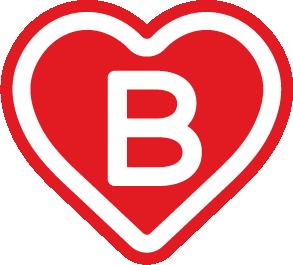
06/12/2025



06/12/2025



Unpacking Y/Our
Sustainability Potential

Our mission is to provide industry-leading sustainable packaging products and services by:
• Influencing to deliver a positive impact on our people and our planet
• Creating compelling, memorable, and seamless consumer experiences through our packaging design and advisory services
• Sharing our customer brands’ unique stories and successes


• Recyclability
• Recycled content
• Strategic sourcing & stock solutions
• Material innovation & discovery
• Lightweighting
• Packaging & product efficiency
• Value analysis/ Value engineering
• Local manufacturing
• In-house, on-the-go & in-store refill systems
• Reuse & refill system design/implementation
Environmental Services
• Strategy roadmapping
• Consumer/market insights
• Quantitative assessments
• Custom design/innovation
• Sustainability education


• Strengthen customer relationships by aligning sustainability with business goals
• Expand revenue drivers beyond traditional packaging products
• Build robust ecosystem of partnerships to support long-term sustainability objectives
• Invest in low-carbon product development and sustainable material innovation e.g. Distinguished Vineyards, Treasury Wine group
• Forge strategic supplier partnerships to ensure high ROI and supply chain resiliency
• Deploy advanced tools like AIpowered platforms for operational efficiency. E.g.
• Develop tailored, market-specific playbooks to address decarbonization needs e.g. Nutracuetical, Wine and Personal Care
• Equip sales teams with tools and training for customer engagement and value delivery
• Focus on customer segmentation to drive differentiated value propositions
• Expand repeatable service offerings such as Compliance-as-a-Service
• Quantify delivered value to enhance margins
• and market share
• Leverage advisory services to strengthen
• Customer relationships and increase wallet share


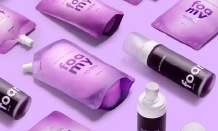
89+
Brands empowered to launch sustainable packaging solutions 80+
Life-cycle assessments conducted to help brands measure their packaging environmental impact
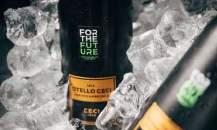

5,658
Renewable energy credits purchased, covering our entire electricity use in our Americas region
Tons of Scope 1 & 2 emissions reduced
12,996
Metric tons of PCR material supplied


Of waste diverted at our Napa Valley warehouse, preventing 6k tons of waste from going to landfill

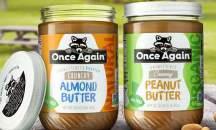
Achieved sustainable building certification for our EMEA Headquarters in Milan, Italy
Achieved Science Based Target Initiative (SBTi) verification
$2.9 Billion In Net Revenue
8.19+ Million Packs Sold
42k+ Global Customers 50% Scope 1 & 2 Emissions Reduced

22k+ Tons Of CO2 Reduced for Customers
24+ Packaging Awards Won




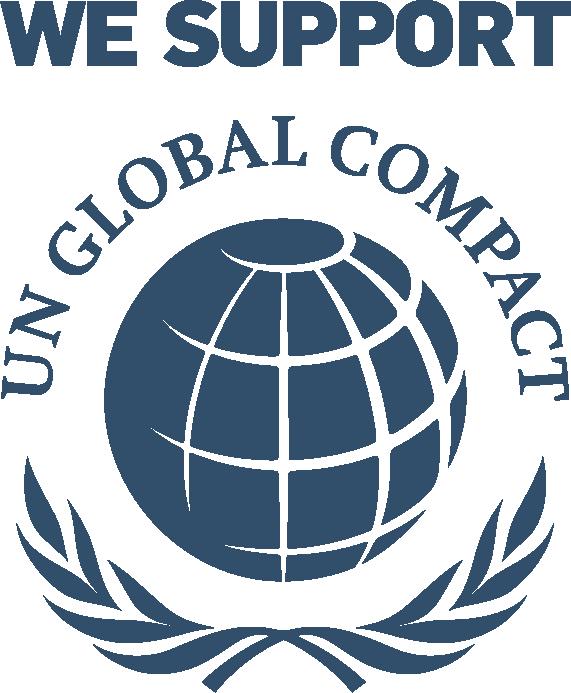




• New EU-wide Regulation replacing the earlier Packaging Directive
• Legally binding across all Member States
• Applies to all packaging materials and not just plastics
• Aims to:
• Cut packaging waste at source
• Make packaging recyclable and/or reusable
• Use more of recycled content
Feb 2025 PPWR enters into force
Aug 2026 PFAS/BPA ban, EPR registration
2027–2028 Final secondary legislation
2030 All packaging recyclable by design, PCR content must be included, and minimization must be applied.
2035 Recycled at scale
2040 Aspirational waste reduction & reuse targets



Ensuring packaging materials can be effectively recycled to reduce waste.

Producers are responsible for the entire lifecycle of their packaging, including its endof-life disposal.



Implementation of bans on certain nonrecyclable or harmful materials in packaging.

Setting specific targets for the reuse of packaging to minimize waste.

Encouraging the use of Post-Consumer Recycled materials in packaging to promote sustainability.




Requirements for clear labelling on packaging to inform consumers about recyclability and disposal methods.

No company is exempt—if you sell packaged goods in the EU, you’re in scope
8-Step Preparation Plan for Business:
UNDERSTAND YOUR EXPOSURE AUDIT PACKAGING PREPARE FOR EPR
BUILD A COMPLIANCE ROADMAP ALIGN SUPPLIERS
DEVELOP INTERNAL SYSTEMS MONITOR REGULATORY UPDATES LEVERAGE INCENTIVES
Berlin Packaging is positioning itself not just as a packaging supplier, but as a strategic compliance partner, helping business in PPWR Compliance

HOW BERLIN CAN HELP
• Map all packaging formats. Know what kinds of packaging your business uses.
• Identify material types (plastic, paper, glass, etc.)
• Categorize them into food-contact, pharma, logistics, or grouped
• Check sales regions (EU-wide)
• If you sell in multiple EU countries, you’ll need to register with EPR schemes in each one.
Share PPWR FAQs to clarify which packaging formats are in scope.
Provide preliminary PPWR framework documents tailored to specific substrates and end-markets.
Offer consultative support to help SMEs understand exemptions (e.g., pharma, PGI, design-protected items).

Assess each SKU for:
• Assess recyclability: Can it be recycled in practice and at scale?
• Can it be reused or refilled?
• Does the packaging include banned features like false bottoms?
• Check for PFAS/BPA presence
• Is it using compostables that may not be allowed?
• Is PCR (post-consumer recycled content) used, and at what percentage?
Use BP’s risk-mapping tools to assess highrisk packaging types like plastic packaging, decorated packaging, multi-material and composite packaging, oversized packaging, single-use packaging
Offer a PPWR Assessment Template to audit current packaging against 2030 compliance criteria.
• EPR (Extended Producer Responsibility) requires producers to finance packaging waste management.
• Register for EPR in all relevant Member States
• Different countries apply this differently, with variable fees. Hence, understand local fee structures and modulations
• Track - Packaging weight & material, Recyclability grade and PCR usage.
• Help SMEs set up data tracking to meet these requirements.
HOW BERLIN CAN HELP

Offer guidance on navigating country-specific EPR responsibilities.
Share knowledge on eco-modulated fee structures (based on recyclability grade).
Highlight how BP’s master data system can track attributes like weight, material, and recyclability for reporting.

• By 2026 -> Eliminate PFAS, update labelling,
EPR registration
• By 2028 -> Ensure recyclability, pilot reuse systems
• By 2030 -> Achieve full compliance across design, labelling, PCR, minimization, and reuse.
Provide a clear roadmap aligned with delegated act milestones (e.g., labelling in 2026, DfR in 2028).
Offer training sessions based on end-market segmentation (e.g., beauty vs food vs transport).
Share white papers and templates to help SMEs plan through regulatory uncertainty.

• Share PPWR expectations
• Ensure your packaging vendors provide you with documentation:
• PFAS-free confirmation
• PCR% content certifications
• Recyclability credentials
• Seek alternatives for banned formats
• This reduces risk and helps you build compliant supply chains.
Organize training and awareness sessions for suppliers and internal teams regarding PPWR
Provide template to collect organized, holistic information from Suppliers
Act as a technical packaging partner, offering compliant material specs.
HOW BERLIN CAN HELP
• Assign PPWR compliance lead
• Train design and marketing teams
• Set up KPI tracking dashboard to track key metrics like packaging weight, material, and recyclability.
• Maintain records for EPR and regulatory audits
• Train teams (design and marketing) on what they can/can’t claim on packaging.

Launch of the Master Data Management (MDM) system, incorporating PPWR-related data fields and validation rules, enabling accurate data capture, and cross-functional alignment
Share training content and updated Q&A documents for different teams (sales, design, procurement).
Help SMEs align product data with upcoming regulatory data fields (e.g., recyclability grade, PCR %).

• Monitor current and new regulatory changes
• Join industry platforms and mailing lists
Provide ongoing legal monitoring and internal updates across regulatory milestones.
Keep SMEs informed about pending acts such as Labelling (Aug 2026), Reuse & bans (Feb 2027), and Recyclability grades (2028–2030)
Update external-facing documents in response to legal evolution.

• Lower EPR fees through better designs with recyclability and light-weighting
• Use compliant green marketing
• Seek funding for innovation, circular systems
• Collaborate on reuse infrastructure or DRS schemes
Highlight potential cost savings from recyclable designs and reusable packaging.
Enable SMEs to present sustainabilityaligned products to their own customers using BP’s packaging and guidance.
Co-develop custom sustainable packaging solutions that meet regulatory and branding goals.



• Packgine is an innovative platform designed to help brands navigate the complexities of sustainable packaging.
• Brands gain access to essential tools and resources to evaluate packaging materials for recyclability and traceability.
• Robust carbon footprint analysis supports data-driven, sustainable decision-making.
• Scenario planning capabilities help anticipate regulatory changes and market trends.
• Link: https://youtu.be/zl0ir1k2-Xg

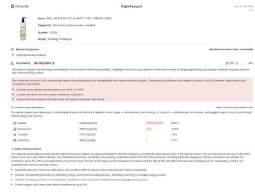




Circularity | Optimization | Refill & Reuse
• Custom, impact-resistant, dishwasher-safe refillable shampoo and conditioner bottles
• Made with BPA-free and EA-free Eastman Tritan plastic
• Reduces environmental impact by 69% after using bottle for 1 year (compared to 2 PCR bottles)
Circularity | Optimization | Refill & Reuse
• Custom refillable bottles for skin care products from oil cleansers and toners to treatments and creams
• Uses our Airglass line, leveraging airless technology to protect ingredient efficacy and optimize product use
• Reusable glass bottle, pump, and cap with refillable product cartridges
Circularity | Optimization
• Custom bottles made with 90% PCR
• Reusable bottles made with impactresistant, BPA-free Eastman Tritan plastic
• Reusable bottles reduce carbon footprint by 69% (compared to two PCR bottles when used for one year)
• Packaging update supports B Corp certification and net-zero by 2030 goal


Circularity | Optimization
• Custom hair care and body care bottles made with 100% PCR plastic
• Refill pouches made of 30% PCR plastic
• Pouches use 80% less plastic than two of the brand’s 16oz bottles
• Packaging includes How2Recycle label
• Packaging update supports brand goal of reducing virgin plastic use by 75% by 2025
Sustainable Product
Offerings
New and Innovative
Sustainable Product Offerings in-stock at Berlin Online’s Warehouse (or awaiting production / shipment).



20+ Packaging Components and Materials in progress at any time. Adding products to help support the Refill portion of Berlin’s C.O.R.E Model.








• 100% bio-based

• Significantly reduces fossil fuel dependency
• Cuts carbon emissions by up to 58%
• Compostable and biodegradable
• Helps minimize plastic waste
• Produced from renewable feedstocks
• Plant sugars, vegetable oils, waste
• Can be engineered to replicate the properties of traditional plastics
• Expands potential use cases
• Examples: ABS and PP

• Innovative design
• Blends paper and recycled materials
• Paper integration can reduce plastic waste by up to 65%
• Customizable
• Adjustable size and height, unique graphics, full 360° print area
• Low-Cost Tooling
• Debossing, embossing, die-cut windows, liners for jars (e.g., collagen, lotions, powders)


Steps
Description
Take Stock
Define Scope
Regulatory Check
Inventory all packaging and define sustainability goals.
Gap Analysis
Action Plan

What packaging do we use? What are our sustainability targets?
Select packaging types for assessment. Which packaging is most critical for compliance?
Evaluate packaging against PPWR criteria (recyclability, banned substances, etc.).
Does this packaging meet recyclability grade A, B, or C? Are PFAS present?
Identify non-compliance and improvement areas. What changes are needed to meet minimum recyclability standards?
Develop roadmap for compliance, assign responsibilities, and set deadlines.
Who will lead the redesign? By when must changes be implemented?
Documentation Record findings, evidence, and next steps. Attach test reports, supplier declarations, and assessment forms.
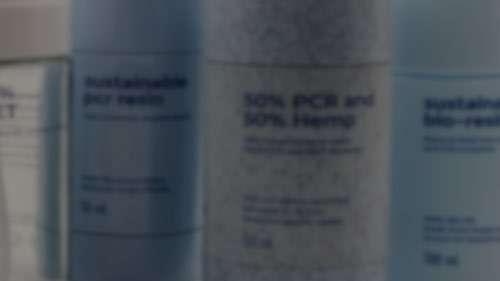




All packaging must be designed to be recyclable by 2030.
This initiative aims to ensure that all types of packaging can be processed in recycling facilities, minimizing waste.





Achieve a 55% recycling rate by 2035.
DfR guidelines are being finalized.

This target emphasizes the importance of increasing the volume of packaging that is actually recycled.

The Design for Recycling (DfR) guidelines will provide specific criteria for packaging design to enhance recyclability.

1



EPR is a financial contribution by brand owners for packaging.
This contribution covers the net cost of collection, sorting, and recycling of packaging materials.

2


EPR contributions are based on packaging weight, type, and recyclability.
The contributions vary according to the characteristics of the packaging materials used.

3


Fees for flexible plastic packaging range from 400 to 4,000 €/tonne.
The fees are determined by the specific type and recyclability of the flexible plastic packaging.


Minimization measures by weight and volume must be implemented by 2030. This requirement underscores the importance of adhering to EU standards related to design specifications.


Double walls and features designed to enhance the perception of volume will be prohibited.


This regulation aims to minimize excessive packaging that gives a misleading impression of volume.
Space ratio in e-commerce packaging must not exceed 50%.

This initiative aims to optimize packaging space and minimize waste in e - commerce shipments. This initiative aims to optimize packaging space and minimize waste in e - commerce shipments. .



Mandatory minimum percentage of PCR content in plastic packaging. Requirements vary by packaging type and format, calculated as an average per manufacturing plant and year.
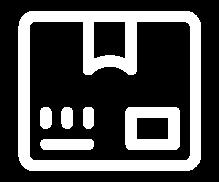
2030: Minimum 10% for contact-sensitive packaging. Specific requirement for the year 2030 to encourage sustainable practices.



2040: Increased percentages for various plastic packaging types.
Future regulations aim for higher PCR content in plastic packaging to enhance sustainability.

By 2030, a minimum reuse target of 10% for certain beverage containers will be established.

This initiative aims to enhance sustainability in packaging practices.
Additional targets will be set for logistics packaging. This reflects a broader commitment to increasing reuse across various packaging types.


Guidelines will clarify the full range of packaging under reuse obligations. These guidelines will provide detailed information on what qualifies for reuse requirements.



By August 2026, claims must specify if they relate to the entire pack or only components.

This regulation aims to enhance clarity for consumers regarding product claims.

“Recyclable” claims will not be allowed as of 2030.
This change is part of efforts to improve recycling practices and consumer understanding.


Various labels are in discussion for sorting and recycling.
The development of these labels is crucial for effective waste management and recycling processes.
